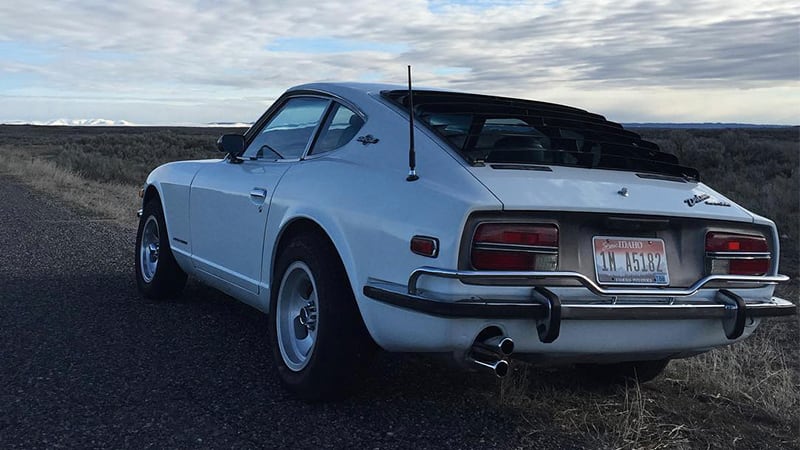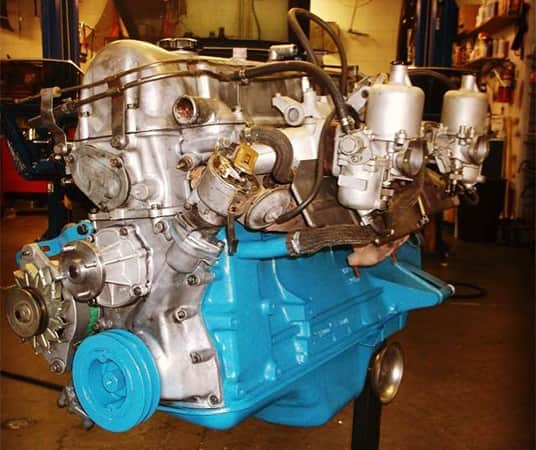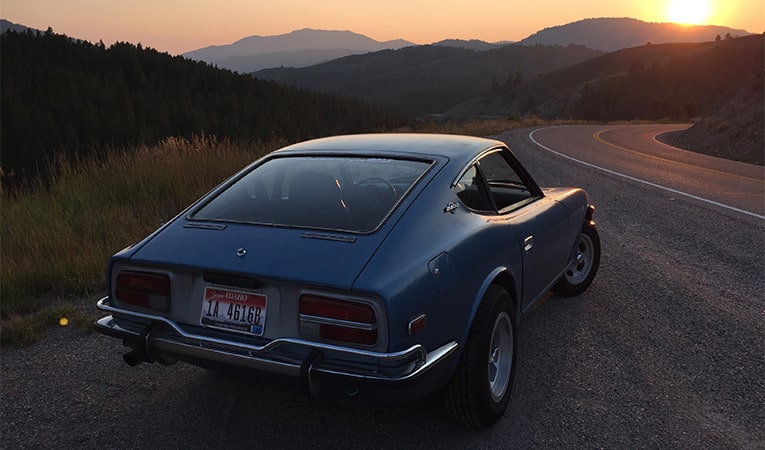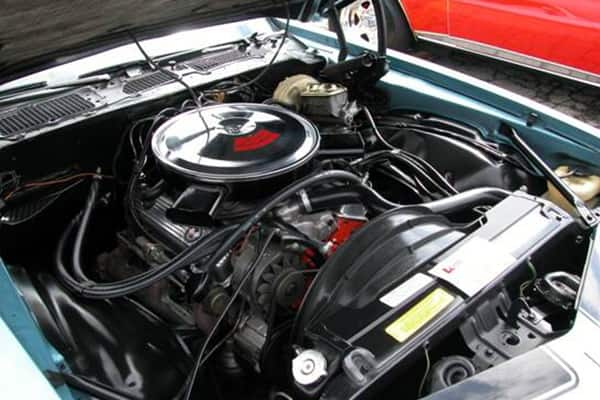Yutaka Katayama. You may not have heard of him, but you've surely seen his influence on the automotive world. Affectionately known as "Mr. K" and the "Father of the Z car," Katayama is to many a hero and a legend.

Source | Matthew Davis
Yutaka Katayama. You may not have heard of him, but you've surely seen his influence on the automotive world. Affectionately known as "Mr. K" and the "Father of the Z car," Katayama is to many a hero and a legend.
In the 1960s, Japanese cars in the United States had yet to get a serious foothold. They offered decent fuel economy and were pretty reliable, not to mention cheap too. They were also under-powered, stodgy and prone to rust. In short, they were anything but cool.
Japanese automakers had a long way to go to establish a strong dealer network in the U.S. and really needed a halo car to up their image and perceptions with buyers. As an executive at Nissan, Katayama had some radical ideas and introduced several cars to the American market that changed the perception of Japanese cars forever. One was the Datsun 240Z.
To Japan, Nissan has been akin to one of the “Big Three" in the United States. When it first started selling cars in the U.S., it used the moniker "Datsun" instead of "Nissan," for fear of the line failing in America and thus tarnishing the Nissan name. But when the Datsun 240Z hit showroom floors in 1969, it was such a smashing success that over the next 15 years Datsuns started to display badges that advertised “Datsun by Nissan" and, eventually, just "Nissan."

Source | Matthew Davis
Known in Japan as the S30 or Fairlady Z, development of the 240Z started way back in 1965. Mr. K thought a hatchback would be easier to bring to market in the United States than a roadster, and the final version of the Z had enough room for a little bit of baggage in the hatch. It could also easily accommodate 6-foot-tall Americans, and had elegant, graceful styling that was unlike anything on the road at the time.
The Datsun 240Z entered the U.S. market at the tail end of the great muscle-car era and at the peak of popularity for British roadsters. The latter group, with models such as the Triumph TR6 and MG MGB, were directly in the cross-hairs of Mr. K's creation, and they were blown from the sky by the Z.
The 240Z was a two-seater GT (grand touring) sports car with a short deck and elegant long hood. Many consider it to be the budget version of the venerable Jaguar E-Type. It certainly had a British feel to the design, sound, and feel of the car, but without the quirky, unreliable aspects.
With an MSRP of $3,500 (think about $23,000 today), the Datsun 240Z was priced slightly higher than the MGB GT and roughly about the same as a Porsche 914. Those who wanted something along the lines of a Chevrolet Corvette or Ford Mustang would have needed to pay over $2,500 more, nearly doubling the price of the Datsun.
The Z gave people the cool factor they wanted at a price they could afford, and it was reliable, day in and day out. As muscle cars lost potency through the 1970s, the Datsun Z increased in popularity in the U.S., while its British competitors fell out of the picture almost entirely.

Source | Matthew Davis
The first-generation Z was powered by a 2.4 liter inline six, dubbed the L24 engine. Derived from the engine in the Datsun 510, this motor had a cast-iron block and alloy head, a single overhead cam and a pair of Hitachi side-draft carburetors.
Underneath, the Z had a fairly conventional independent suspension, with MacPherson struts, drag links and an anti-roll bar up front and Chapman struts and wishbones in back. Its rack-and-pinion steering was quick and tight, with 2.7 turns lock-to-lock. It had a fairly stiff chassis that lent itself to being tossed around on curves, and build quality that welcomed being driven hard. That was a welcome change from, say, a Jaguar or Ferrari that felt a little fragile and breakable, like using Grandma's fine china for Wednesday's lunch.
The Datsun Z produced 151 horsepower, which went pretty far with a curb weight of about 2500 pounds. It could make it from 0-60 in under nine seconds, and blast through the quarter mile in around 16 seconds. That was quick enough to hang with the likes of the Porsche 911. Rear independent suspension enabled the Z to handle just as well as it looked, and it had great success on the racetrack as well as on the showroom floor. “What wins on Sunday sells on Monday" was a popular saying in those days.
And the first-generation Z did win. The East African Safari Rally is one of the most demanding, grueling events in motorsports, spanning five days at average speeds of over 60 mph. In its first outing in 1971, a Z-car won in overall victory, class victory, team victory and manufacturer's championship at the rally, and then went on to take home overall victory again two years later.
By 1974, the Z-car's engine was bored out to 2.6 liters and the 260Z was introduced. To comply with emissions standards, timing was retarded a bit and electronic ignition replaced the previous breaker point setup. A 2 + 2 version with a slightly longer wheelbase was introduced for '74, interior ergonomics were revamped and 5 mph safety bumpers were added.
The 240 was only available in model year '74; the following year, the engine was bored out to 2.8 liters and the 280Z came into being. The 280Z featured Bosch fuel injection and was little changed otherwise until it was replaced by the 280ZX in model year 1978.
The 280ZX was ostensibly a second-generation Z-car, but it was also heavier, plusher and less performance-oriented than the original line. The turbo engine from these cars, however, has been a fairly popular transplant into 1st-gen 240Zs.
Buy, sell, hold
When it comes to collecting cars, the nostalgic Japanese market is an interesting niche to consider. The past five years or so have truly given us a glimpse at the potential of these great vehicles. Fifteen years ago, you could pick up a clean Datsun Z for less than they sold new. Nowadays, an early 240Z will bring over $10,000 in a moderate state of disrepair. Just as with the stock market, in the auto market you should buy low and sell high.
Some say that the 240Z, in particular, is climbing in value at a higher rate than almost any other car. Out of the three early-generation models of the Z (240, 260, 280) the 1970 models have almost already reached the stage where you'd want to hold. The 260Z and 280Z are where you can still pick them up for a good price. The key is finding models that haven't been wrecked or clapped-out or aren't too cankered with rust. Japanese cars of this era are notorious for rusting to bits.
If you can pin down a Z-car from a dry climate like Texas or Arizona, there's quite an aftermarket for mods that can enhance performance. New Tokico struts and Eibach springs are a popular way to tighten up the suspension, and aftermarket exhaust and EFI (or triple Weber side-draft carb) retrofits are great for goosing power. People have also been doing engine swaps on Z-cars for years; a Chevy small-block V8 or 4.3 V6 is a fairly easy swap, as is a Nissan RB25DETT or L28ET engine.

Source | Matthew Davis
The crystal ball
We've all heard the stories of the people who sold a 1955 Chevrolet for peanuts and kick themselves every day for it. While there's no crystal ball to tell you what cars will come into their own down the road, there are a few patterns to consider. The Datsun Z is becoming a collectible because not only was it an icon and a game changer in its day, but also because the people who now want to buy their first collector car remember growing up when the Z hit the showroom floor. It's the type of car that gets comments at the gas station like, “I had one of those in high school, and it was so cool!"
Sometimes predicting the future is as simple as thinking back to the cars that influenced you when you were in your formative years.
Did you covet or own a Datsun Z? Let us know in the comments!







